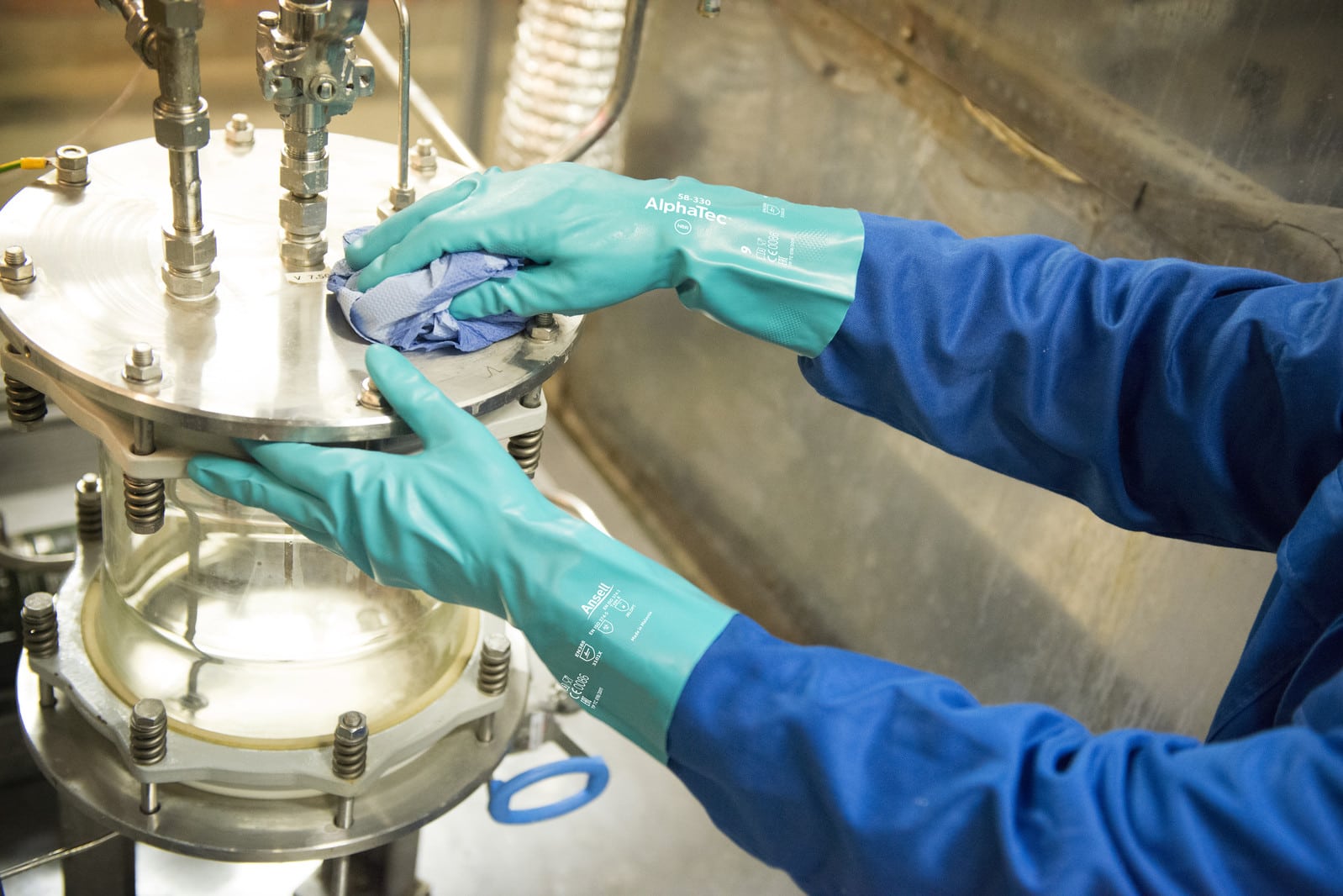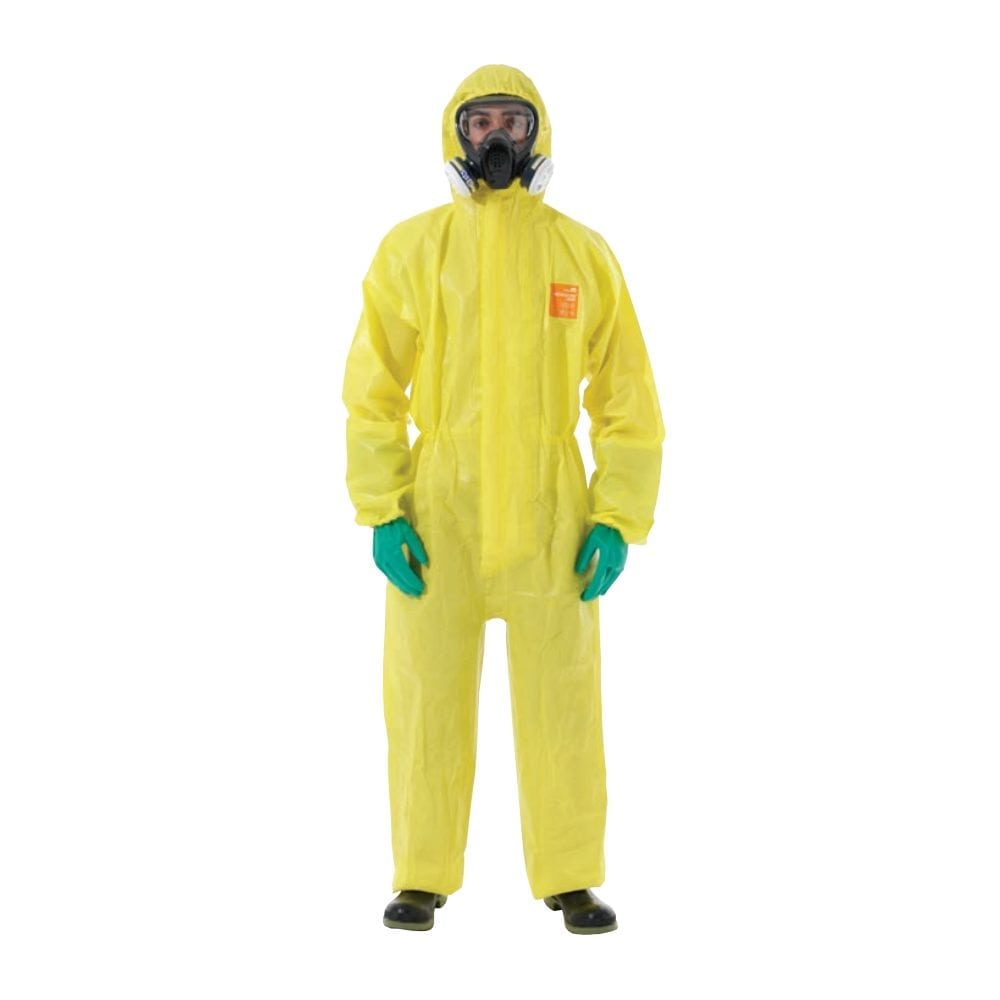
Working with chemicals is is extremely hazardous with the risk of burns high. It is therefore imperative that the right PPE is chosen for the task.
Depending on the situation, the following PPE may be required by workers:
- - Hoods
- - Head protection
- - Eye protection
- - Ear protection
- - Respiratory equipment
- - Suits, coveralls or aprons
- - Gloves
- - Boots
It is up to the safety officer or other individual or team responsible for specifying PPE to determine which of these will be needed and that they will be of a high enough specification to protect workers.
What to look for
There are many factors that will determine which chemical resistant PPE is required, including which chemicals are being handled, what is the potential for contact (drops, splashes or immersion), how long is contact likely to be for, which parts of the body are most at risk and what level of dexterity do workers need to complete the task safely.
Once this risk assessment is complete, there are four key elements to any chemical resistant clothing.
Degradation
This measures how much and how quickly the material will deteriorate once it comes into contact with a chemical. This can include dissolution or any physical change to the material, such as stiffness, swelling, softening and the like.
Breathrough time
This measures the length of time it takes for a chemical to completely penetrate the chosen material. Workers then know how long they have between contact with a chemical before it reaches their skin.
Permeation rate
Measuring the rate at which chemical will move through the material, permeation rate is measured in milligrams per square meter per second and the higher it is, the faster a chemical will move.
Material
Last and by no mean least, the choice of material is vital. Certain materials protect better against certain chemicals. This is no more important than in gloves. Handling of chemicals requires certain kinds of gloves manufactured form certain materials.
Butyl, for example, is resistant to peroxides, rocket fuels and highly corrosive acids. It provides oxidation and abrasion resistance and remains flexible at low temperatures.
Natural rubber or latex provides protection from water solutions of acids, alkalis, salts and ketones and is of great benefit to workers as it is comfortable, strong and temperature resistant.
Nitrile gloves offer good protection from oi, grease, acids, caustics, chlorinated solvents and alcohol. Conversely, they are not a good choice against strong oxidizing agents, aromatic solvents, ketones or acetates.
Finally, neoprene, which lasts longer than latex, is resistant to hydraulic fluids, petrol, alcohols, organic acids and alkalis, whilst also being pliable and resistant to tears. It also offers superb dexterity.
One of the most well respected and reliable brands for chemical protection PPE is Ansell. Their extensive range of chemical resistant gloves is manufactured to the highest standards and will meet the requirements of almost any chemical protection requirement.
Ansell Latex Gloves
Where latex is the ideal material, Ansell offer a few options in this material.
Ansell Neoprene Gloves
Ansell offer neoprene chemical resistant gloves in a number of different formats.
Ansell Nitrile Gloves
Nitrile chemical resistant gloves by Ansell combine comfort, dexterity and protection in a range that is second to none.


In addition, Ansell's AlphaTec® range offers superior chemical protection, excellent grip and optimal flexibility.
Complementing the broad spectrum of chemical resistant gloves that Ansell have to offer, the company also manufactures chemical protective clothing, offered by MG Safety. The range comprises MICROGARD® 1800 and MICROGARD® 2000 coveralls and MICROCHEM® 3000 and MICROCHEM® 4000 coveralls, each offering different levels of chemical protection.
At MG Safety we can supply the full range of Ansell chemical resistant clothing and hand protection. Contact us today on 01949 830100 or email us.


















